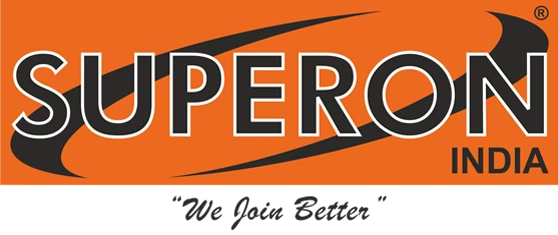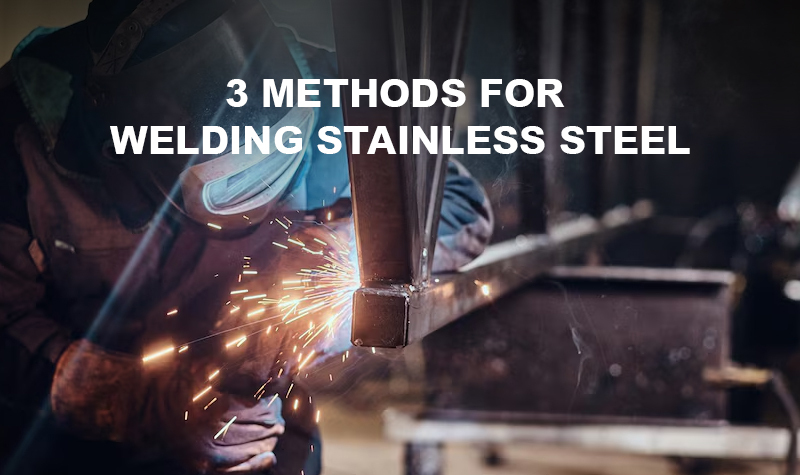Stainless steel, with its exceptional combination of strength and corrosion resistance and a fine appearance, has become a mandatory product in many industries. Whether it's highly advanced medical devices or long-lasting architectural structures, its versatility is simply unbeatable. However, the potential completion of stainless steel relies upon its constituent materials being joined, and that's where the key welding steps come into play.
How a stainless steel is welded determines the integrity, lifespan, and even appearance of the final product. The process employed in welding depends on several factors, including grade and age of stainless steel to be utilized, application of welded product, and appearance.
General Stainless Steel Welding Techniques
We adore here at Superon the metallurgy of two pieces of metal becoming one. And when you're dealing with stainless steel – that sleek, tough, rust-resistant marvel – how you go about mating together is absolutely essential.
You see, welding stainless steel's not so much about keeping metal together. It's an art, it's a science, and it's a damn delicate dance between heat, material, and final product. How you do it will decide the strength, the look, and even the life of what you end up with at the end of it.
While there is a complete universe of welding techniques, in this post today we are going to detail the three most in-demand techniques our professional technicians here at Superon employ for different stainless steel applications. Take this as your friendly introduction to the basics on how we build stainless steel components in solid and beautiful outcomes.
TIG Welding: The Craftsman's Hand (Gas Tungsten Arc Welding - GTAW)
Imagine a sculptor working with clay with wonderful finesse, piling and finishing with scrupulous precision. That is the character of TIG welding, or by another name, Gas Tungsten Arc Welding (GTAW). It will usually be the process of choice when excellence, flexibility, and a pinch of sophistication are particularly crucial, especially in handling the extremely delicate character of thinner stainless steel.
But the sorcery is really in the shield gas – normally pure argon, sometimes a proprietary blend containing gases like helium, hydrogen, or nitrogen. This inert gas is more or less a protective blanket, wrapping around the weld pool from the air. Why? Because stainless steel will combine with oxygen and nitrogen in the air if heated to very high temperatures, which causes oxidation and a smaller, less corrosion-resistant weld.
Why TIG Weld Stainless Steel?
- Unparalleled Quality: TIG welds have a reputation of being clean, accurate, and pleasing in appearance. Due to the precision we have for controlling the application of heat as well as the filler metal, we can produce incredibly high-quality welds with virtually no spatter.
- Flexibility is Where It's At: TIG welds incredibly thin sheets right through to relatively thick pieces. It's also ideal for intricate designs and odd shapes.
- Strength and Longevity: The controlled heat input and inert gas shielding create very strong, long-lasting welds that are very resistant to corrosion – a hallmark of well-welded stainless steel.
- Best for Visible Welds: If the weld will be part of the finished product that will be visible, TIG generally produces the best appearance.
Use TIG welding as the preferred method when:
- The application demands the highest quality and precision weld.
- You are welding thin gauge stainless steel.
- The weld needs to be visually appealing.
- Corrosion resistance is extremely important.
Resistance Welding: The Efficiency Specialist (Spot Welding)
Every now and then, you simply must devise some quick, effective, and economical method of butting stainless steel pieces together in overlap. Step forward, resistance welding, more commonly known to the non-professional as "spot welding." It's sort of a techno-punch turbo-clinch!
While filler metal and arc are not used in resistance welding, the electrical power is. We place two overlapping stainless steel plates between two electrodes of copper alloy. A controlled electric current is pushed through the electrodes. Resistance of the current generates hot spots in the region of sheet-to-sheet contact. With pressure of the electrodes, a concentrated heat forms an excellent "spot" weld between the two pieces.
Why Resistance Welding is a Great Option for Stainless Steel?
- Cost-Effective and Efficient: It is a fast and relatively inexpensive process, especially in the case of repetitive joining operations.
- Highest Productivity: The speed of the process makes it a great option for mass production.
- Minimum Distortion: The local heat input reduces the risk of warping or damaging the surrounding material.
- Multi-Applications: It can be used for different stainless steel thicknesses and part sizes.
Use Resistance Welding when
- Stainless steel sheets have to be overlapped and welded together.
- Speed and efficiency are most important.
- COST must be high priority.
- Distortion has to be avoided.
MIG Welding: The Workhorse (Gas Metal Arc Welding - GMAW)
For applications where one requires a reliable, consistent weld with good manufacturing, MIG welding, or Gas Metal Arc Welding (GMAW), is normally our workhorse of choice in Superon. It's semi-automatic and when done correctly provides good joints in stainless steel.
In MIG welding, a solid wire electrode is continuously fed into the welding gun. The wire acts as a heat source (when an arc exists between the workpiece and the wire) and filler metal. Simultaneously, a shielding gas, usually high in argon, is passed through the welding gun to protect the weld pool from atmospheric impurities.
Why MIG Welding is Such a Versatile Choice for Stainless Steel?
- Strong and Reliable Welds: MIG welding produces strong welds that are suitable for various applications.
- Superb Productivity: The fact that the wire is fed continuously means that welding can be carried out quicker compared to TIG.
- Simple to Use: Though skill is still required, MIG welding is simpler to use and learn than TIG.
- Range of Applications: It can be used on stainless steel of any thickness and joint type.
MIG welding can be best where:
- High quality weld and high production rate are needed.
- There is stainless steel fabrication with thicker pieces.
- There is a need for ease of operation and efficiency.
Selecting the Right Method: It's All About the Needs
Next, what is the best method to weld stainless steel? The fact is, there isn't technically one "best" method. The best one is completely a matter of what your project has specific needs for.
| Feature | TIG Welding (GTAW) | Resistance Welding (Spot Welding) | MIG Welding (GMAW) |
|---|---|---|---|
| Quality | Highest | Moderate | Good |
| Versatility | High (thin to moderate thickness) | Moderate (overlapping sheets) | Good (various thicknesses and joints) |
| Speed/Productivity | Lower | High | Moderate to High |
| Cost | Generally Higher | Lower | Moderate |
| Skill Level | High | Moderate | Moderate |
| Appearance | Excellent, clean, precise | Spot welds, may require finishing | Good, can be prone to spatter |
| Distortion | Low heat input, minimal distortion | Very low, localized heat | Moderate heat input, potential for distortion |
| Shielding Gas | Inert gas (Argon, Helium, etc.) | Not typically required | Inert or active gas (Argon, CO2, etc.) |
| Filler Metal | Separate filler rod (optional) | No filler metal used | Continuous wire electrode (filler) |
| Best For | High-quality welds, thin materials, intricate designs, visible welds | Overlapping sheets, high-volume production, cost-effectiveness | General fabrication, moderate to thicker materials, good productivity |
Also Read: Welding Excellence - Superon 308L Stainless Steel Elecrode

